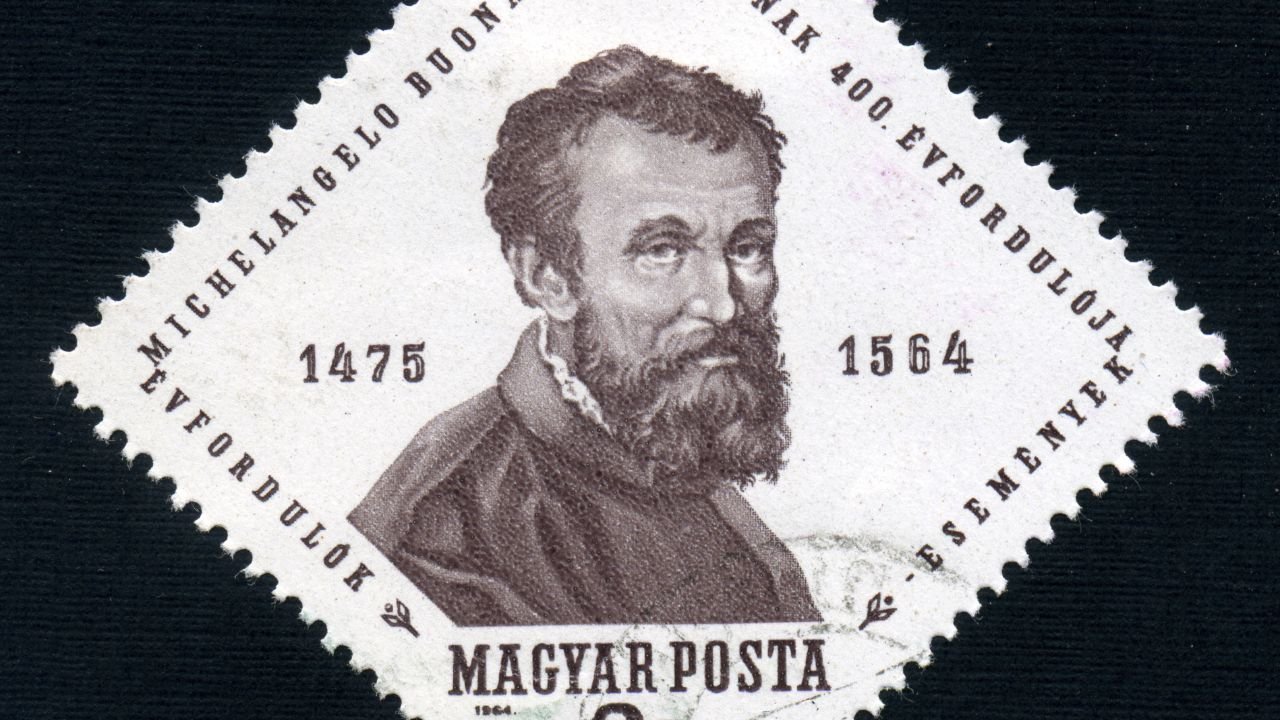Michelangelo di Lodovico Buonarroti Simoni, better known simply as Michelangelo, was one of the greatest artists of the Italian Renaissance. He is famous for his amazing contributions to both art and architecture. Michelangelo changed how people thought about art by creating stunning sculptures, paintings, and buildings. Some of his most well-known works include the David, the Pietà, and the ceiling of the Sistine Chapel. These masterpieces continue to inspire artists and art lovers even today.
Michelangelo’s impact on art is unmatched. His sculptures are known for their lifelike details, and his architectural designs have shaped many important buildings. He had a unique ability to capture both the beauty of the human body and spiritual themes, making him one of the most important artists in history.
This article will look at key facts about Michelangelo’s life, his most famous works, and the legacy he left behind. From his early rise to fame to his groundbreaking contributions in architecture, Michelangelo’s life was one of extraordinary talent and genius.
What Was Michelangelo Famous For

1. Who Was Michelangelo?
Michelangelo was born on March 6, 1475, in Caprese, Italy. He grew up in Florence, which was the heart of the Renaissance. Even as a child, Michelangelo showed great talent in drawing and sculpture. At the age of 13, he became an apprentice to Domenico Ghirlandaio, a famous painter. There, Michelangelo learned the basics of fresco painting and other important techniques.
Later, Michelangelo’s talent for sculpture caught the attention of Lorenzo de’ Medici, the ruler of Florence and a major supporter of the arts. Under Lorenzo’s guidance, Michelangelo studied the works of ancient Greek and Roman artists, which strongly influenced his style. By his early twenties, Michelangelo was already making a name for himself with his blend of classical beauty and emotional realism.
2. What Did Michelangelo Do?
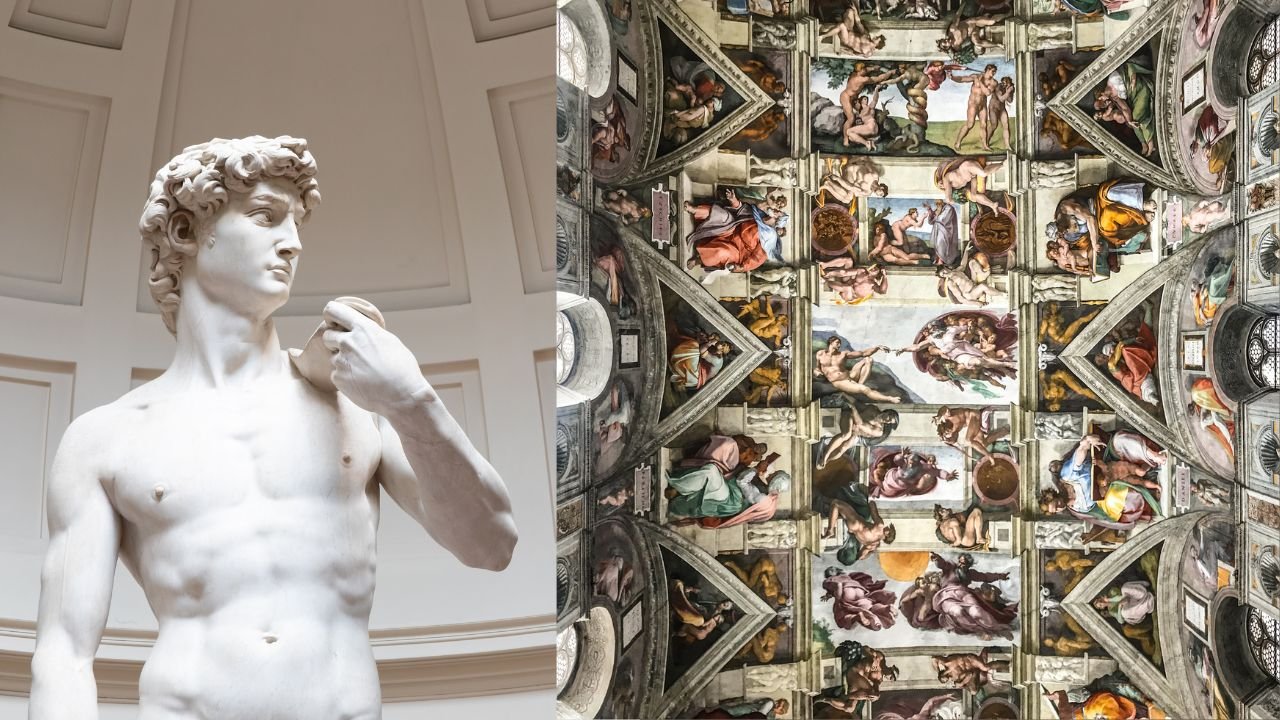
Michelangelo was a multi-talented artist, excelling in many areas like sculpture, painting, architecture, and even poetry. Throughout his life, he constantly pushed the boundaries of creativity, becoming one of the most influential figures in Western art.
As a sculptor, Michelangelo created timeless masterpieces like the David and the Pietà, which are still admired today for their lifelike detail and emotional depth. His 17-foot-tall David represents the ideal human form and is a symbol of Florence’s strength. The Pietà, which Michelangelo finished when he was only 24, shows Mary holding the body of Jesus after his crucifixion. The tenderness and sorrow in the figures make it one of the most powerful sculptures ever created.
In painting, Michelangelo’s most famous work is the ceiling of the Sistine Chapel in Vatican City. Painted between 1508 and 1512, the ceiling features over 300 figures, including the iconic scene of The Creation of Adam, where God gives life to Adam. This painting is considered one of the greatest achievements in art history.
As an architect, Michelangelo’s most famous work is the design of the dome of St. Peter’s Basilica in Rome. This dome is an architectural wonder and is still a defining feature of the Roman skyline today.
3. What Is Michelangelo Famous For?
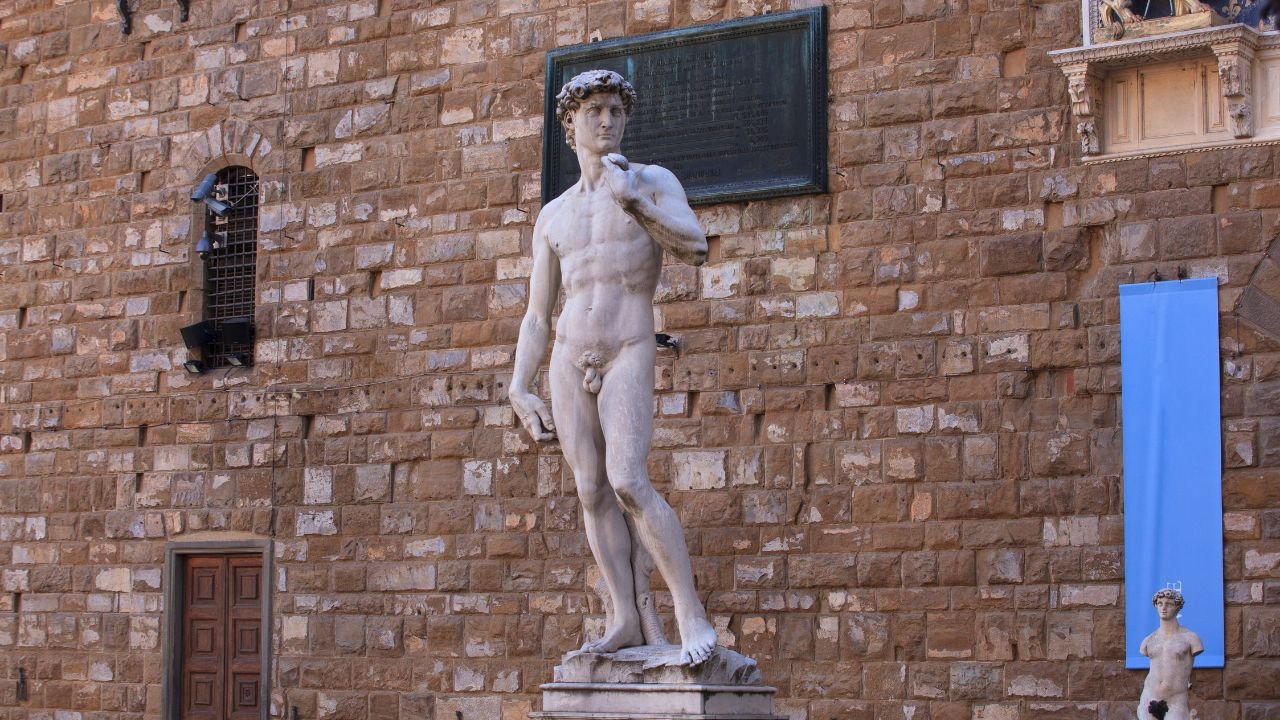
Michelangelo is famous for transforming the world of art, especially in sculpture, painting, and architecture. His works set a new standard for what art could be during the Renaissance.
In the sculpture David, Michelangelo broke away from traditional biblical representations. His David is not only a religious figure but also a symbol of human strength and beauty. The level of detail, especially in the muscles and posture, shows Michelangelo’s deep understanding of the human body. The Pietà, which shows Mary and Jesus, is another masterpiece that combines beauty and sadness, making it an emotional and spiritual work of art.
In painting, his work on the Sistine Chapel ceiling changed how fresco painting was done. The Creation of Adam, in particular, became one of the most famous images in the world. Michelangelo’s ability to paint the human body in dynamic poses and capture deep emotions left a lasting impact on Western art.
Michelangelo also made huge contributions to architecture, especially with his work on St. Peter’s Basilica. His design for the dome is considered one of the greatest architectural feats of the Renaissance, influencing buildings around the world for centuries.
4. When Did Michelangelo Become an Artist?
Michelangelo started showing his talent as an artist at a young age. When he was 13, he began training with the famous painter Domenico Ghirlandaio. Although he started with painting, his passion soon shifted to sculpture. His big break came when he was invited to study under Lorenzo de’ Medici in Florence, where he was exposed to the works of ancient Greece and Rome.
At 24, Michelangelo completed his first major work, the Pietà, for St. Peter’s Basilica in Rome. The sculpture received widespread praise and launched him into international fame. A few years later, he created the famous David, which solidified his reputation as one of the greatest sculptors of his time.
5. What Was Michelangelo Inspired By?
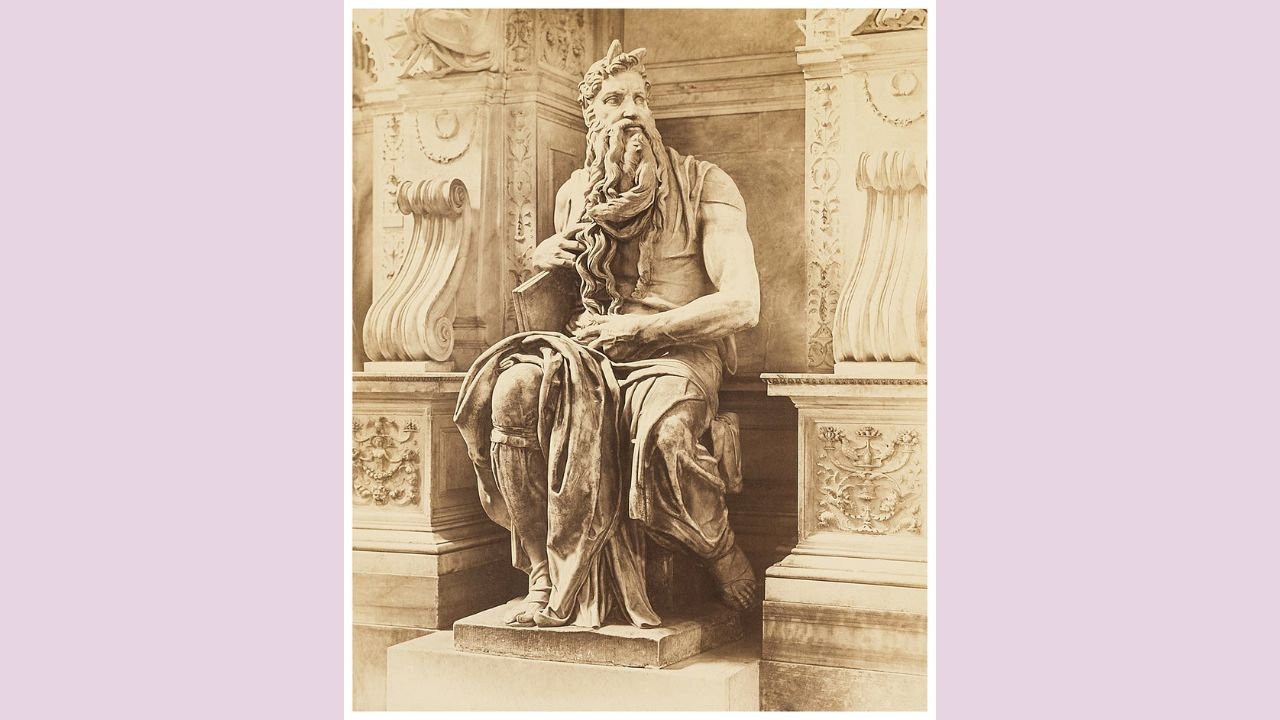
Michelangelo was inspired by many things, but one of his biggest inspirations was the human body. He spent a lot of time studying anatomy, even dissecting dead bodies to better understand how muscles and bones worked. This deep knowledge allowed him to create sculptures and paintings that captured the human form with stunning accuracy.
He was also greatly influenced by ancient Greek and Roman art. He admired the balance, proportion, and beauty found in classical sculptures, and these elements are reflected in his own work. For example, his sculptures like David and Pietà show a perfect mix of classical beauty and strong emotion.
Michelangelo’s relationship with the Catholic Church also shaped his work. Many of his commissions, including the Sistine Chapel ceiling, were religious, and his art often reflects his deep faith. His ability to blend religious themes with lifelike human figures made his work especially powerful.
6. Michelangelo’s Style and Techniques
Michelangelo’s style was focused on the human body, movement, and emotion. He was a master of capturing the human figure in a realistic and dramatic way, making his sculptures and paintings come alive.
As a sculptor, Michelangelo was famous for his work with marble. He believed that every block of stone had a figure inside it, and his job was to release it by carefully chiseling away the excess. This technique can be seen in his masterpieces like David and the Pietà, where every muscle, vein, and expression is carefully detailed.
In painting, Michelangelo revolutionized fresco techniques with his work on the Sistine Chapel ceiling. He used a method called buon fresco, where paint is applied directly onto wet plaster. This allowed the colors to stay vibrant for hundreds of years. His frescoes are full of dynamic figures and show his deep understanding of anatomy.
7. Michelangelo’s Major Works
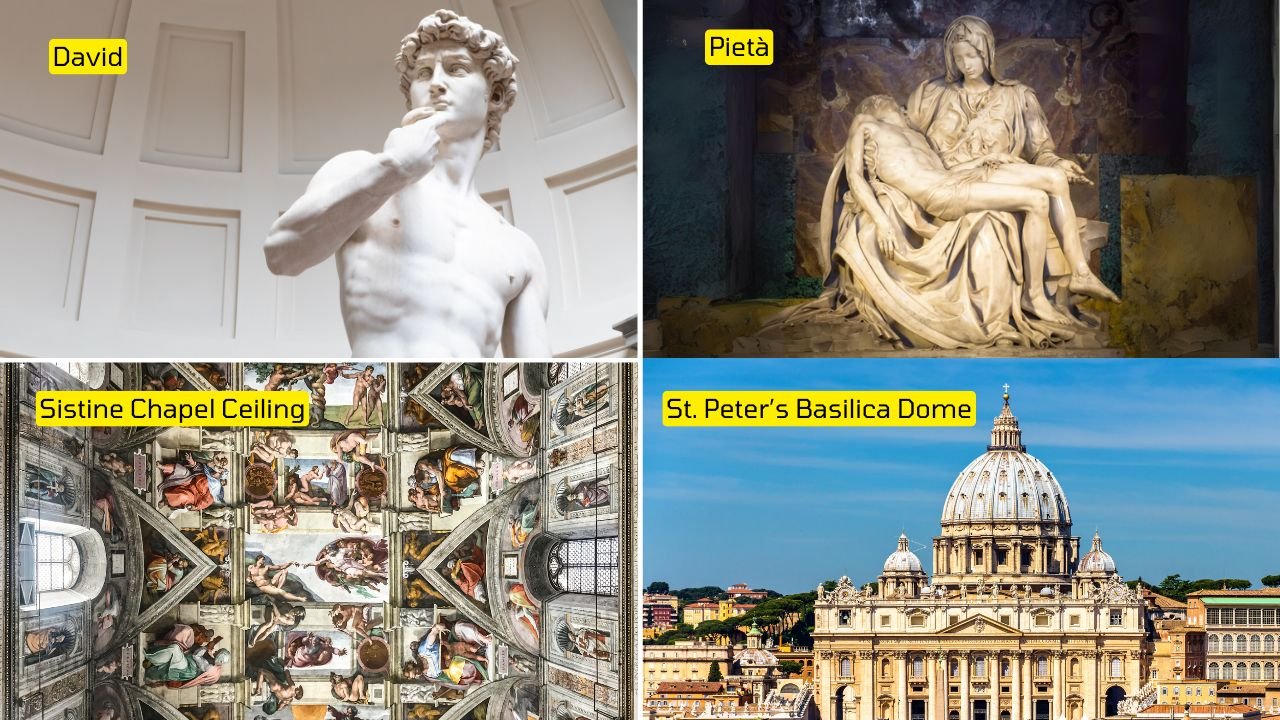
Michelangelo’s major works include some of the most celebrated masterpieces in art history:
- David: This 17-foot-tall statue of David stands as a symbol of Florence and the power of the human spirit. Its lifelike detail and sense of calm strength make it one of the most famous sculptures ever created.
- Pietà: Sculpted when Michelangelo was just 24, the Pietà shows Mary cradling the body of Jesus. The sculpture is known for its tenderness and emotional power.
- Sistine Chapel Ceiling: The Sistine Chapel ceiling is considered one of the greatest achievements in painting. Its detailed scenes, like The Creation of Adam, have left an indelible mark on art history.
- St. Peter’s Basilica Dome: As the chief architect of St. Peter’s Basilica, Michelangelo designed its iconic dome, which remains one of the most important architectural structures in the world.
8. Michelangelo’s Influence and Legacy
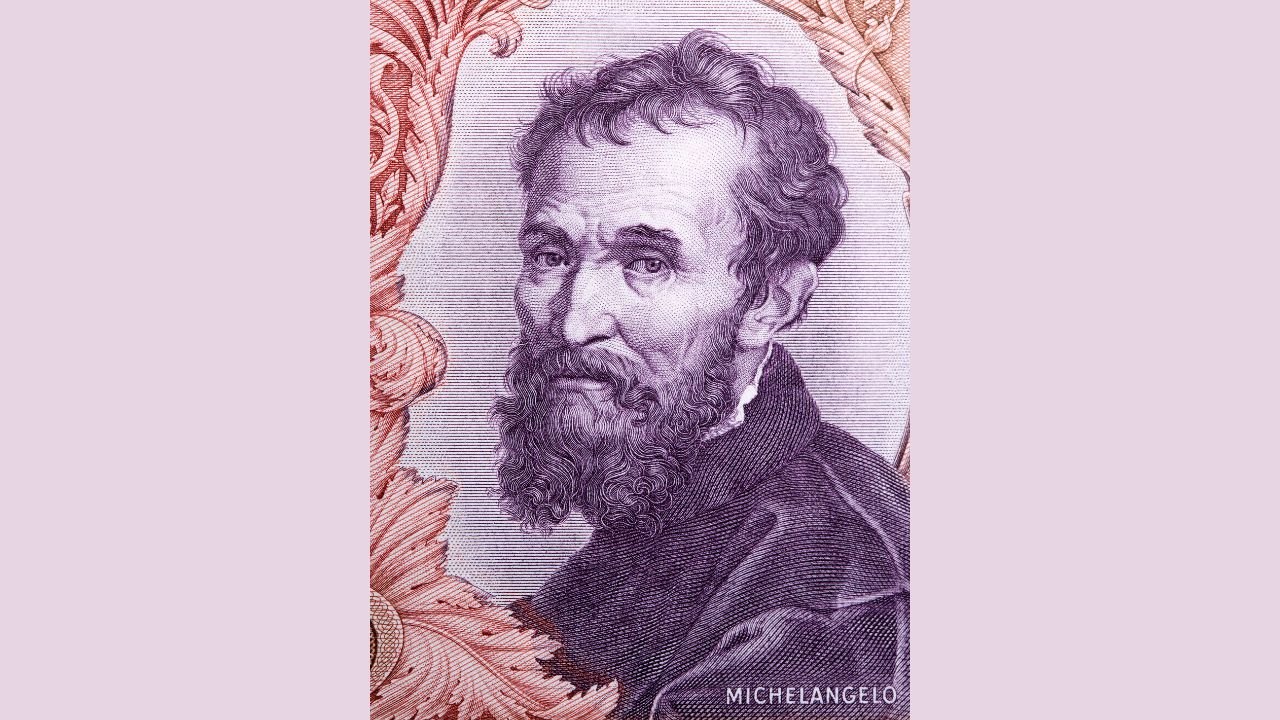
Michelangelo’s influence on art is immeasurable. His ability to bring life to marble and fresco painting set a new standard for Renaissance artists. His works, especially the David and Pietà, are models of realism and emotion, inspiring artists like Raphael, Caravaggio, and Bernini.
His innovations in architecture, particularly the dome of St. Peter’s Basilica, influenced the design of buildings for centuries. Michelangelo’s legacy continues to live on, with his works being admired and studied by art lovers and historians all over the world.
Michelangelo was not only a master artist, but he also reshaped the way we think about the power of art. His ability to blend technical skill with deep emotion made him a towering figure in art history, and his legacy will continue to inspire for generations to come.
Conclusion
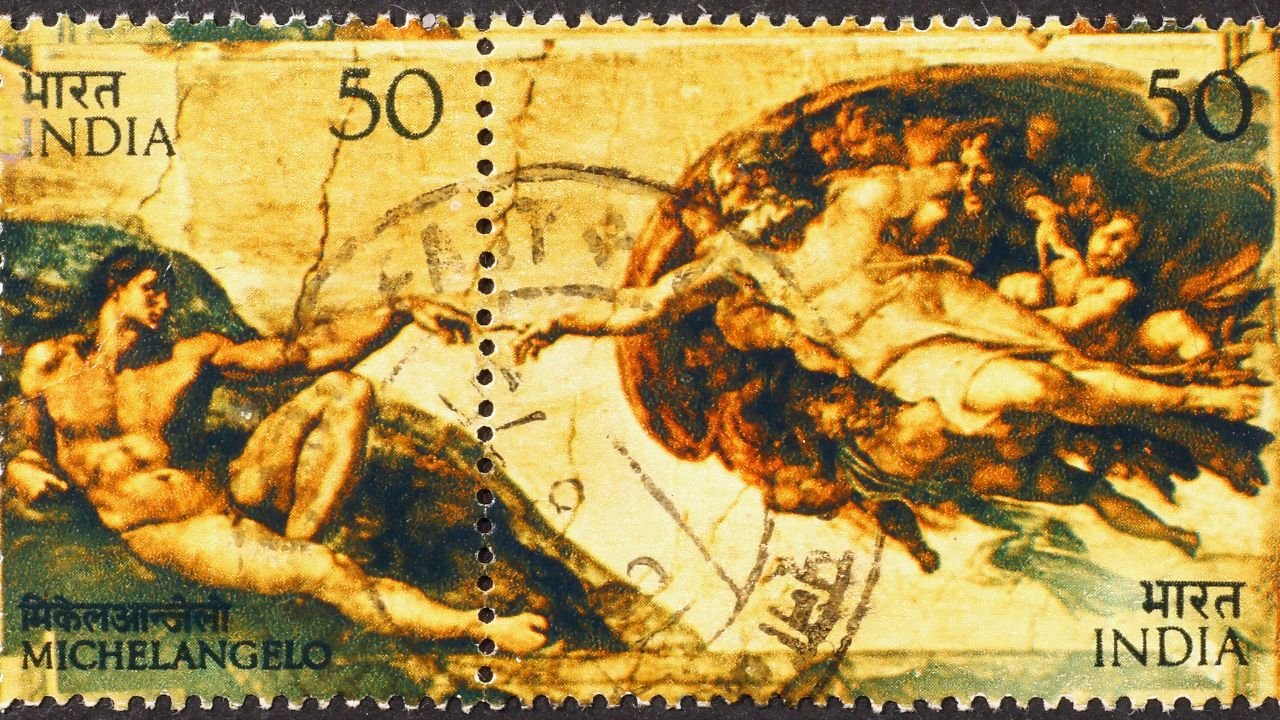
Michelangelo’s contributions to art and architecture are unmatched, making him one of the greatest figures in art history. He mastered many forms of art, from sculpture and painting to architecture and even poetry. His iconic works, like the David, Pietà, and the ceiling of the Sistine Chapel, continue to inspire awe with their beauty and emotional depth. Michelangelo’s architectural innovations, especially in St. Peter’s Basilica, have influenced buildings for centuries, and his ability to capture both physical beauty and spiritual emotion in his art set a new standard for artists everywhere.
His genius lies in his ability to combine technical mastery with a deep understanding of the human spirit. Michelangelo’s works are timeless, speaking to people across generations, and reminding us of the power of art to move, challenge, and elevate the human experience. Even today, Michelangelo remains a towering figure in the art world, and his masterpieces continue to inspire wonder and admiration.
Fun Facts About Michelangelo
- Reclusive Nature: Even though he was famous, Michelangelo was very private and often preferred to work alone. He would sometimes go for days without eating or sleeping while focusing on his art.
- Reluctant to Paint the Sistine Chapel: Michelangelo saw himself more as a sculptor than a painter and was initially hesitant to take on the Sistine Chapel ceiling project. He only agreed after being persuaded by Pope Julius II. Despite this, the Sistine Chapel became one of his most iconic achievements.
- Left-Handed Genius: Like other famous figures such as Leonardo da Vinci, Michelangelo was left-handed. This may have contributed to his unique artistic style.
- Artistic Rivalry with Leonardo da Vinci: Michelangelo had a well-known rivalry with Leonardo da Vinci. Though they respected each other’s talent, they had different artistic approaches and often criticized each other’s works.
- Sense of Humor: Michelangelo had a witty side. When a critic made fun of David for being too revealing, Michelangelo humorously added a fig leaf to cover the statue.
Michelangelo’s Famous Quotes
Michelangelo was not only a great artist but also a thoughtful person. Here are some of his most famous quotes:
- On Sculpture: “Every block of stone has a statue inside it, and it is the task of the sculptor to discover it.”
- On His Lifelong Learning: “I am still learning.” This quote shows his belief that even the greatest artists are always learning and improving.
- On Beauty: “The true work of art is but a shadow of the divine perfection.” Michelangelo believed that art was a reflection of something greater, like divine beauty.
- On Hard Work: “If people knew how hard I worked to get my mastery, it wouldn’t seem so wonderful at all.” He emphasized the hard work and dedication behind his genius.
Interesting Comparisons
When comparing Michelangelo’s work with that of other famous Renaissance artists like Leonardo da Vinci and Raphael, his influence on Renaissance art becomes even more clear.
- Michelangelo vs. Leonardo da Vinci: While Leonardo focused on scientific details and subtle expressions, Michelangelo’s art emphasized strong emotions and physical strength. For example, Mona Lisa shows quiet beauty, while Michelangelo’s David captures powerful emotions and a heroic stance.
- Michelangelo vs. Raphael: Raphael was known for his graceful and balanced compositions, like The School of Athens. In contrast, Michelangelo’s figures in the Sistine Chapel are muscular, full of movement, and charged with intense energy. Raphael admired Michelangelo and was inspired by his bold approach to human figures.
- Michelangelo vs. Donatello: Donatello, an earlier Renaissance sculptor, created a more delicate and youthful David. Michelangelo’s David, however, is larger, more heroic, and represents human strength and courage, making it a more dramatic interpretation of the biblical figure.
Michelangelo’s ability to blend technical skill with emotional depth set him apart from his contemporaries and left a lasting legacy on the world of art. His influence on sculpture, painting, and architecture is still felt today, and his works continue to be admired for their beauty and impact.

